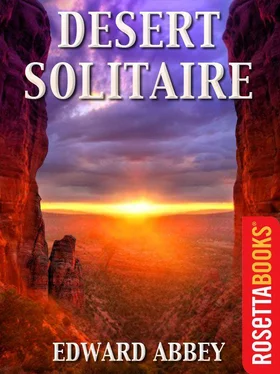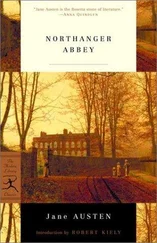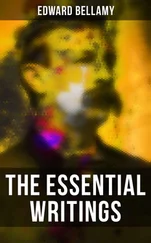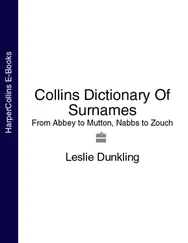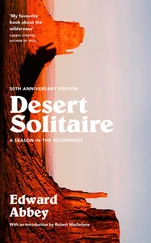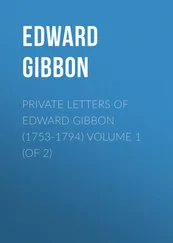Abbey, Edward - Desert Solitaire (Edward Abbey Series )
Здесь есть возможность читать онлайн «Abbey, Edward - Desert Solitaire (Edward Abbey Series )» — ознакомительный отрывок электронной книги совершенно бесплатно, а после прочтения отрывка купить полную версию. В некоторых случаях можно слушать аудио, скачать через торрент в формате fb2 и присутствует краткое содержание. Год выпуска: 2011, Издательство: RosettaBooks, Жанр: Старинная литература, на английском языке. Описание произведения, (предисловие) а так же отзывы посетителей доступны на портале библиотеки ЛибКат.
- Название:Desert Solitaire (Edward Abbey Series )
- Автор:
- Издательство:RosettaBooks
- Жанр:
- Год:2011
- ISBN:нет данных
- Рейтинг книги:4 / 5. Голосов: 1
-
Избранное:Добавить в избранное
- Отзывы:
-
Ваша оценка:
- 80
- 1
- 2
- 3
- 4
- 5
Desert Solitaire (Edward Abbey Series ): краткое содержание, описание и аннотация
Предлагаем к чтению аннотацию, описание, краткое содержание или предисловие (зависит от того, что написал сам автор книги «Desert Solitaire (Edward Abbey Series )»). Если вы не нашли необходимую информацию о книге — напишите в комментариях, мы постараемся отыскать её.
Desert Solitaire (Edward Abbey Series ) — читать онлайн ознакомительный отрывок
Ниже представлен текст книги, разбитый по страницам. Система сохранения места последней прочитанной страницы, позволяет с удобством читать онлайн бесплатно книгу «Desert Solitaire (Edward Abbey Series )», без необходимости каждый раз заново искать на чём Вы остановились. Поставьте закладку, и сможете в любой момент перейти на страницу, на которой закончили чтение.
Интервал:
Закладка:
I go on. The clouds have disappeared, the sun is still beyond the rim. Under a wine-dark sky I walk through light reflected and re-reflected from the walls and floor of the canyon, a radiant golden light that glows on rock and stream, sand and leaf in varied hues of amber, honey, whiskey—the light that never was is here, now, in the storm-sculptured gorge of the Escalante.
That crystal water flows toward me in shimmering S-curves, looping quietly over shining pebbles, buff-colored stone and the long sleek bars and reefs of rich red sand, in which glitter grains of mica and pyrite—fool’s gold. The canyon twists and turns, serpentine as its stream, and with each turn comes a dramatic and novel view of tapestried walls five hundred—a thousand?—feet high, of silvery driftwood wedged between boulders, of mysterious and inviting subcanyons to the side, within which I can see living stands of grass, cane, salt cedar, and sometimes the delicious magical green of a young cottonwood with its ten thousand exquisite leaves vibrating like spangles in the vivid air. The only sound is the whisper of the running water, the touch of my bare feet on the sand, and once or twice, out of the stillness, the clear song of a canyon wren.
Is this at last the locus Dei ? There are enough cathedrals and temples and altars here for a Hindu pantheon of divinities. Each time I look up one of the secretive little side canyons I half expect to see not only the cottonwood tree rising over its tiny spring—the leafy god, the desert’s liquid eye—but also a rainbow-colored corona of blazing light, pure spirit, pure being, pure disembodied intelligence, about to speak my name .
If a man’s imagination were not so weak, so easily tired, if his capacity for wonder not so limited, he would abandon forever such fantasies of the supernal. He would learn to perceive in water, leaves and silence more than sufficient of the absolute and marvelous, more than enough to console him for the loss of the ancient dreams.
Walking up the Escalante is like penetrating a surrealist corridor in a Tamayo dream: all is curved and rounded, the course of the mainstream and canyon as indirect as a sidewinder, winding upon itself like the intestines of a giant. The canyon floor averages about fifty feet in width but the curving walls are at least five times that high, without benches or ledges, sheer, monolithic and smooth as if carved in butter, paralleling each other in a sort of loosely jointed ball-and-socket fashion, each concavity matched by a corresponding convexity on the opposite wall. And all this inspired by the little stream that swings through the rock and the centuries—truly a perfect example of what geologists call an entrenched meander.
Others have been here before. On a mural wall I find petroglyphs—the images of bighorn sheep, snakes, mule deer, sun and raincloud symbols, men with lances. The old people, the Anasazi.
I come to a second dripping spring, water seeping from a fissure far above, falling in spray upon a massive slab of rock at the foot of the wall. On the flat surface of this tilted slab somebody, maybe a Mormon cowboy fifty years ago, maybe an Indian eight hundred years ago, has chiseled two converging grooves which catch some of the falling water and conduct it to a carved spout at the lower edge. The grooves are well worn, smooth as a pebble to the touch.
As I sit there drinking water from cupped hands, I happen to look up and see on the opposite wall, a hundred feet above the floor of the canyon, the ruins of three tiny stone houses in a shallow cave. As is the case with many cliff dwellings, the erosion of eight centuries has removed whole blocks of rock which formerly must have supported ladders and handholds, making the ghost village now inaccessible.
I am content, however, to view the remains from below. Neither a souvenir collector nor an archeologist, I have no desire to stir the ancient dust for the sake of removing from their setting a few potsherds, a few corncobs, a child’s straw sandal, an arrow point, perhaps a broken skull.
What interests me is the quality of that pre-Columbian life, the feel of it, the atmosphere . We know enough of the homely details: the cultivation of maize, beans, melons; the hunting of rabbit and deer; the manufacture of pottery, baskets, ornaments of coral and bone; the construction of the fortlike homes—for apparently, like some twentieth century Americans, the Anasazi lived under a cloud of fear.
Fear: is that the key to their lives? What persistent and devilish enemies they must have had, or thought they had, when even here in the intricate heart of a desert labyrinth a hundred foot-miles from the nearest grassland, forest and mountains they felt constrained to make their homes, as swallows do, in niches high on the face of a cliff.
Their manner of life was constricted, conservative, cautious; perhaps only the pervading fear could keep such a community together. Where all think alike there is little danger of innovation. Every child in this quiet place would have learned, along with his language and games, the legends of old battles and massacres, flights and migrations. He would be taught that the danger of attack was always present, that in any hour of the day or night, from up or down the canyon or over the rim, the Enemy might appear—cruel, devious, hungry, terrible—perhaps in the shape of those red-horned, hollow-eyed, wide-shouldered monsters painted on the walls of Sego Canyon north of Moab.
Long ago the cliff dwellings were abandoned. Were the inhabitants actually destroyed by the enemies they had always dreaded? Or were they reduced and driven out by disease, by something as undramatic as bad sanitation, pollution of their water and air? Or could it have been, finally, simply their own fears which poisoned their lives beyond hope of recovery and drove them into exile and extinction?
As I walk on, miles beyond Ralph and the river, the canyon changes a little in character, in places growing wider, less deep, with breaks in the wall and steeply pitched ravines that seem to suggest the possibility of an exit to the world above. I make two attempts to climb out of the canyon but the first route dead-ends at the foot of another vertical cliff and the second at a deep, stagnant plunge-pool swarming with tadpoles and dragonflies. Above this pool is an overhanging drop-off down the center of which a thousand years of intermittent drainage has scooped out a pothole and then drilled clear through it, creating a long polished chute and a window in the rock. But there are many of these Moore-like formations, hundreds of them, in the canyon country.
Late in the evening, the sun already down, I find what looks like a deerpath leading up over an alluvium hill toward the southwest rim. I am tempted to take it and see where it goes but I am also hungry, tired, and a bit sore-footed; my raisins are all gone and the canyon grows dark; sadly I turn and start the long walk back.
Long before I come again to the second of the dripping springs night has covered the desert world. I sit down on a driftwood log, build a small fire with shreds of its bark, wait for moonrise. I put the boots back on; water or no water, my feet have suffered enough.
The new moon finally comes, edging above the rimrock, bright as a silver shield. Through moonlight and darkness, as the moon is revealed, then concealed, by the turning of the canyon walls, I continue the march toward camp. For company on the way I have my thoughts and the flutterings and cries of a great horned owl that chooses, for reasons of its own, to follow me for much of the distance.
The return is harder than I expected. If I didn’t have the stream to follow, Ariadne’s thread, it would be easy in the deceptive alternation of moonlight and shadow to take a wrong turn up one of the many side canyons, to spend the rest of the night in bewildered wandering or go to sleep on an empty stomach, covered only with my back. The repeated wading of the stream seems doubly tiring now, especially as the boots become watersoaked and layered with quicksand. I trudge onward, longing for the first sight of Ralph’s campfire, hoping that each new bend in the canyon will be the last. The Escalante is no longer the free and friendly place it was during the day but totally different, strange, unknown and unknowable, faintly malevolent.
Читать дальшеИнтервал:
Закладка:
Похожие книги на «Desert Solitaire (Edward Abbey Series )»
Представляем Вашему вниманию похожие книги на «Desert Solitaire (Edward Abbey Series )» списком для выбора. Мы отобрали схожую по названию и смыслу литературу в надежде предоставить читателям больше вариантов отыскать новые, интересные, ещё непрочитанные произведения.
Обсуждение, отзывы о книге «Desert Solitaire (Edward Abbey Series )» и просто собственные мнения читателей. Оставьте ваши комментарии, напишите, что Вы думаете о произведении, его смысле или главных героях. Укажите что конкретно понравилось, а что нет, и почему Вы так считаете.
